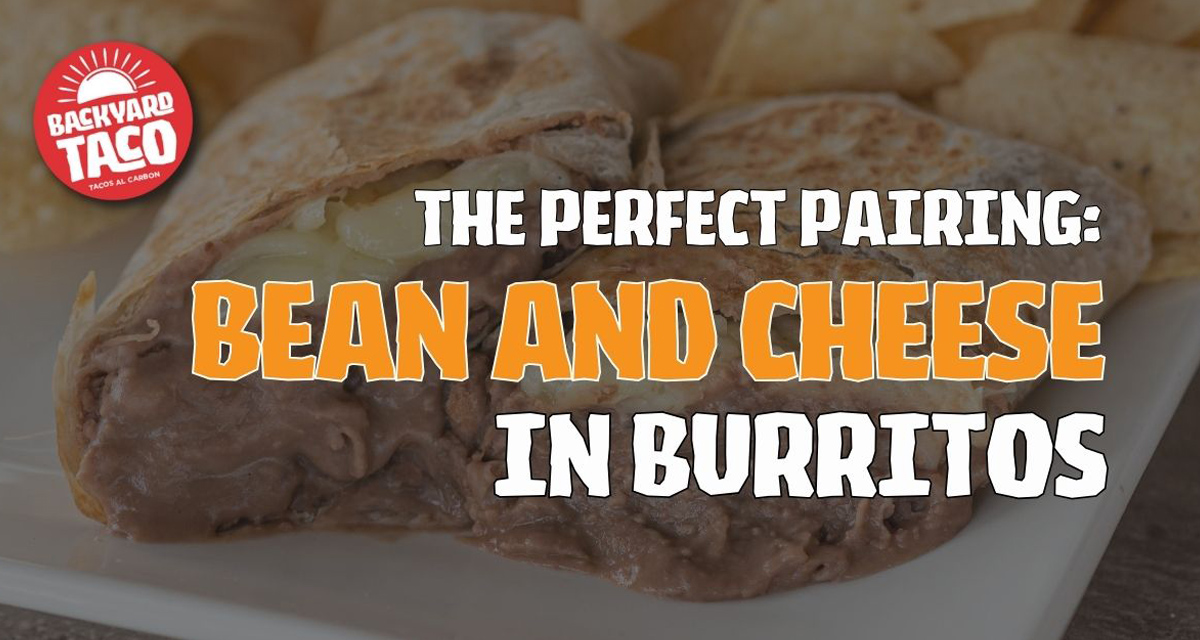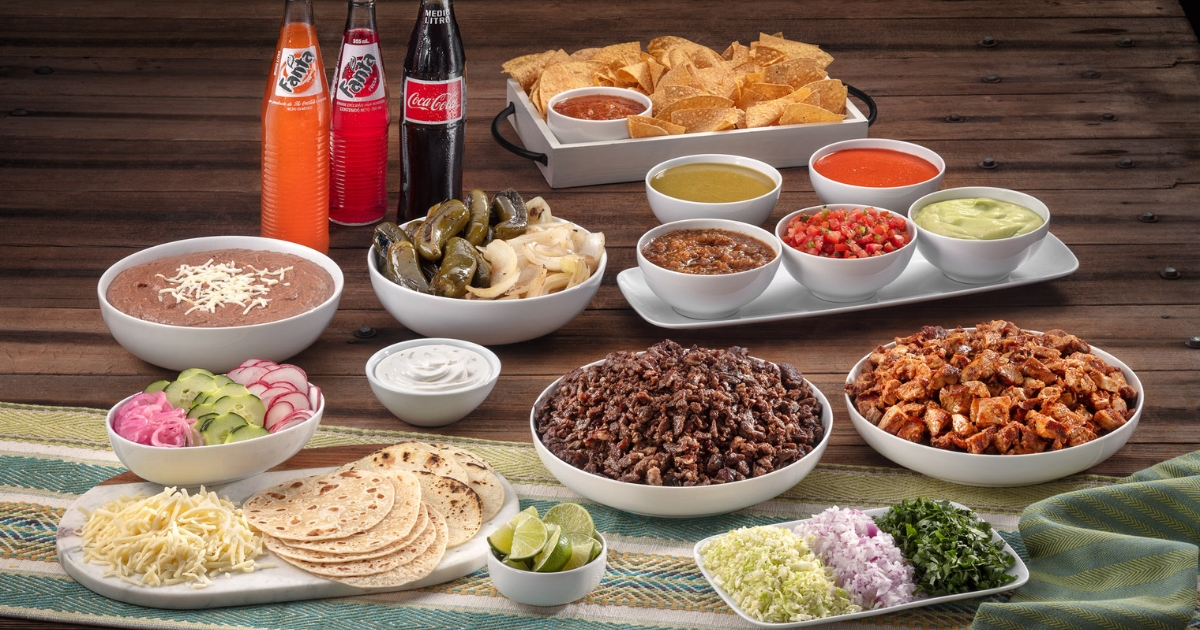Picture it: creamy, refried beans topped with gooey cheese, seasoned any way you want, topped with your choice of salsas, and wrapped snugly in a tortilla. That is the classic bean and cheese burrito, one of the most well-known Mexican dishes of all time. Burritos are extremely popular worldwide, but they’re often dismissed as standard fare – at Backyard Taco, we disagree. The humble bean and cheese burrito is one of the most interesting Mexican dishes simply because of how they have stood the test of time, even if their origins are not exactly clear.
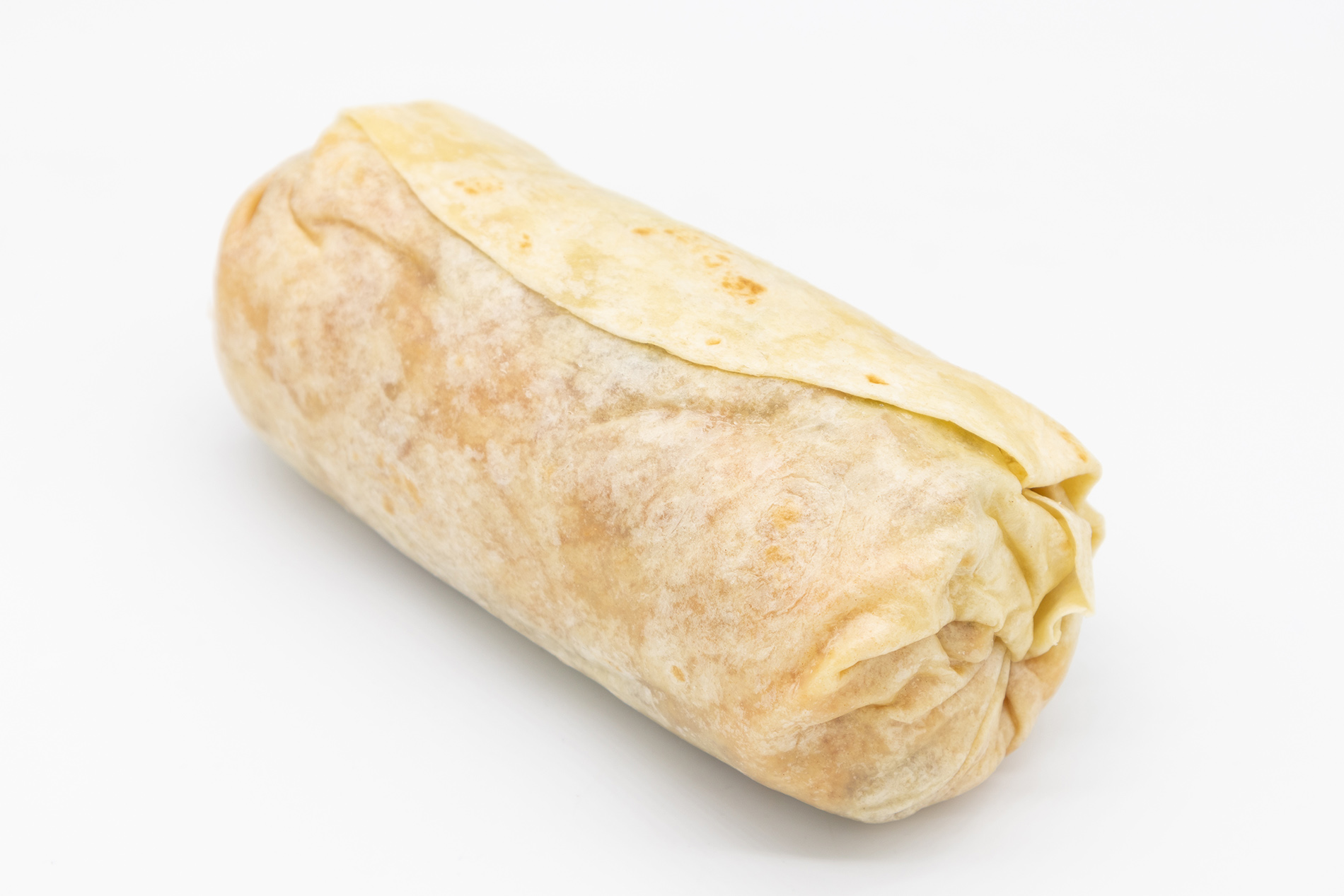
History of the Burrito
While burrito fillings and toppings have changed over time, the history of the burrito is one of our favorite things about this classic dish.
Origins
Did you know that the word “burrito” means “little donkey” in Spanish? If not, that’s okay – mostly because the reason for this name is not entirely clear, and neither is the dish’s exact origin. Some theories suggest that burritos were created as a way to make meals portable, especially among Mexican laborers and travelers during the 1800s. That could explain where the name came from: the food’s use during travel, which often occurred alongside donkeys.
Of course, as with any classic food, there are a variety of theories about the origin of burritos.
Other theories about the creation of the burrito include these fascinating ideas:
- Some believe a street vendor in Chihuahua, Mexico by the name of Juan Méndez invented the burrito during the Mexican Revolution in the 1910s. The theory states that he decided to wrap his food in flour tortillas to keep it warm as he traveled on his donkey. Others soon joined him in his habit of wrapping meats and vegetables in tortillas, and the burrito was born.
- Others say the burrito was invented in Ciudad Juárez in the 1940s by a street vendor who wrapped food in a tortilla. This made for portable, convenient, and appropriately sized portions for children on their way to school. The vendor called the children “burritos” because he thought children lacked intelligence.
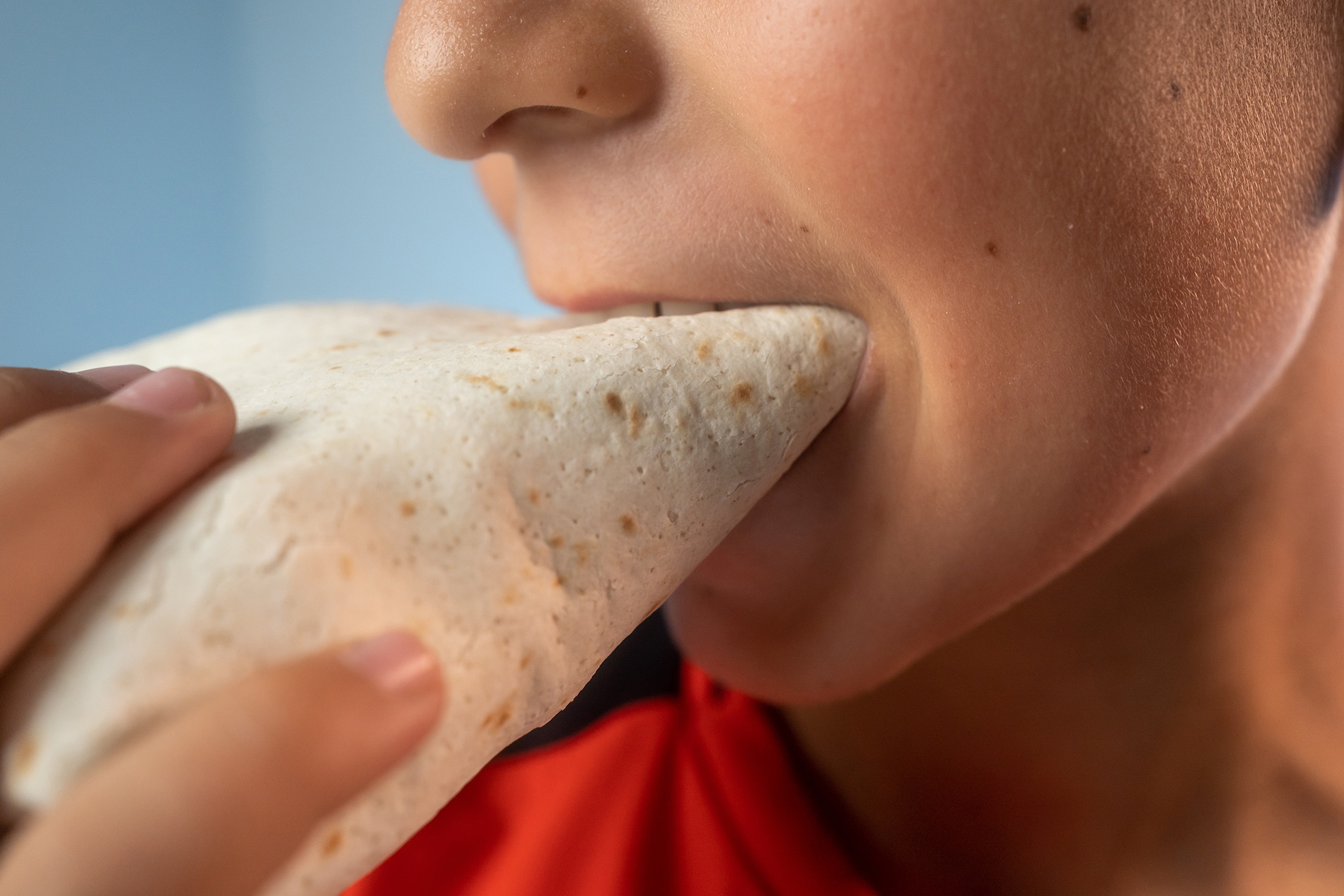
Evolution and Popularity
As the popularity of burritos grew, they spread beyond Mexico’s borders and have taken on different regional variants by adapting to legal ingredients and tastes.
In the 20th century, burritos made their way to the United States alongside their smaller cousin, the taco. They may have been served first by braceros, who were migrant workers from the 1940s to 1960s. These individuals often brought burritos for lunch since they were easy to pack, and eventually, the burrito spread throughout border states like Arizona, California, and Texas.
Arguably, the most popular form of burrito was the Mission-style burrito, known for its large size and varied fillings like meats, rice, beans, salsa, sour cream, and guacamole. Regional variants are the California burrito, which typically includes carne asada, cheese, and french fries, as well as the Tex-Mex burrito, with its heavy focus on meats and cheeses. More authentic versions, like the bean and cheese burrito, proliferated throughout the American Southwest.
Burrito Culture in the Modern World
As burritos spread throughout the US and globally, many fusion variations have popped up. Today, you can find varieties from breakfast burritos, Korean BBQ burritos, and Mediterranean falafel burritos to sushi burritos. Every region has put its cultural influence on the burrito, and it has become beloved worldwide.
This versatility and adaptability are shown through their availability at fast food chains, casual dining restaurants, food trucks, and even at gourmet establishments. They can be made with healthy ingredients, fit into special diets, and remain a convenient way to eat a filling, nutrient-rich meal. Burritos have even become a staple in many non-Mexican households and are prepared for family gatherings and celebrations across many cultures.
Still, while burritos are an icon of innovation due to their adaptability and versatility, we love them for what made them appealing in the first place.
A Classic Pairing: Beans and Cheese
The act of eating food is not just a necessity to fuel our bodies; it is an experience, and that’s why humans are so fantastic at combining ingredients to stimulate our taste buds. Take the combo of beans and cheese – beans have an earthy, mild flavor, while cheese has a rich, creamy, and sometimes salty taste. Similarly, beans, when cooked, have a soft texture, whereas melted cheese is gooey and luxurious. Those flavors and textures balance so well together, which is why the bean and cheese burrito remains such a popular option.
Let’s examine the components of the bean and cheese burrito a little more closely.
Spill the Beans on Beans
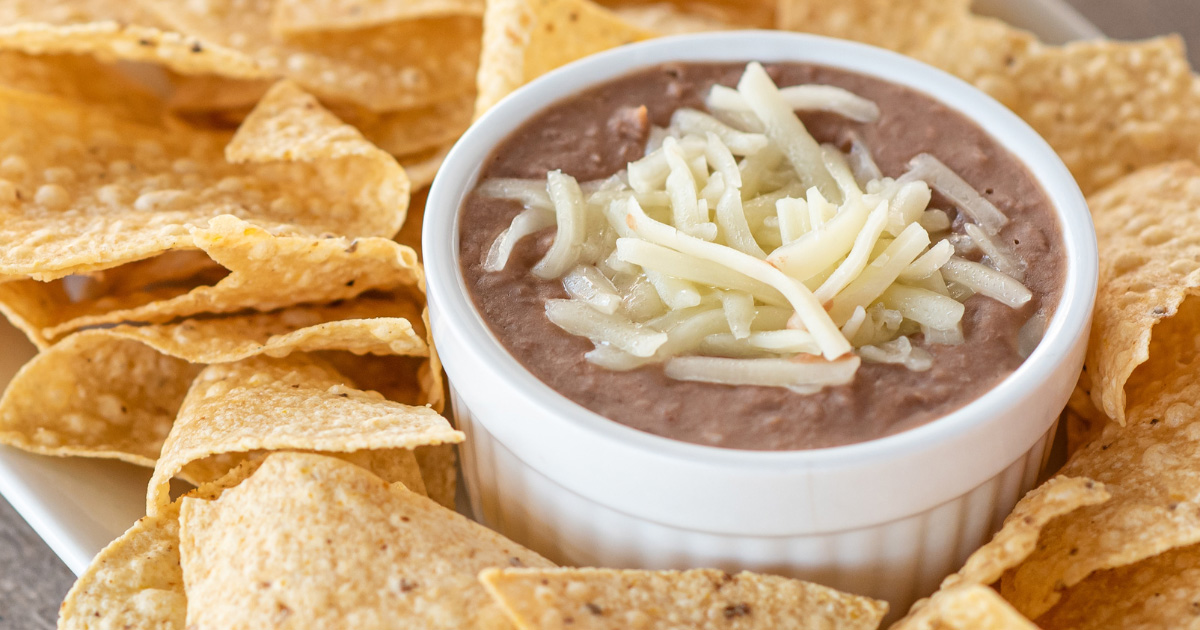
Beans are notoriously versatile. They originate from many different places around the world and can be adapted to grow in several climates. Practically every cuisine features beans in some way, and Mexican food is no exception.
Each type of bean comes with a unique texture and flavor.
Some of the most commonly found in Mexican cuisine are:
- Pinto Beans – Known for their earthy flavor and creamy texture, pinto beans are a perfect base for refried beans.
- Black Beans – These small, shiny beans have a bold and slightly sweet flavor with a firm texture.
- Bayo Beans – Light brown or tan in color and creamy when cooked, bayo beans have a mild, slightly earthy flavor. They are often paired with pork or beef.
- Canario Beans – Creamy and mild flavored, canario beans are versatile and used in many types of dishes like soups and stews.
- Others – Other commonly used beans are Flor de Mayo, Azuki, mora, Flor de Junio, and Anasazi beans.
Beans are used in soups, chilis, and as side dishes; they’re delicious baked and even in salads. Some people call beans “superfoods” because they are nutrient-dense with fiber, antioxidants, iron, and more. They’re an excellent source of plant-based protein and are more affordable than meat.
Cut to the Cheese
It is thought that humans discovered cheese accidentally around the time we domesticated milk-producing animals like sheep and cattle – around 8 to 10,000 years ago. During this time, milk was stored in containers made from animal stomachs. Rennet, an enzyme found in the stomachs of some animals, caused the milk to coagulate, separating the curds and whey. These curds were used to create the variety of cheeses we know today.
In modern times, cheese is everywhere, used in the world’s best-known dishes, including pizzas, soups, salads, and burritos. The possibilities with cheese are endless. Like beans, cheese is nutrient-dense, featuring calcium, vitamin D, protein, fats, and minerals galore. The many types of cheese can differ in nutrients just as easily as they differ in flavor profiles.
Those most commonly found in Mexican cuisine include:
- Queso Fresco – Meaning “fresh cheese” in Spanish, this is a white cheese that is soft and crumbly. It is made of raw cow milk or a combination of goat and cow milk and used as a topping for anything from tacos and burritos to simple bean-based sides.
- Queso Añejo – In Spanish, añejo means “old.” This cheese is the aged version of queso fresco and is firmer and drier.
- Queso Panela – This kind of cheese is smooth, white, and salty. It is made with skim milk, meaning it is firmer and more flexible. It is often eaten as a snack or in a sandwich.
- Requesón – Requesón is a mild, non-salty soft cheese. It is used on empanadas and enchiladas.
- Questo Manchego – Mexican queso manchego is similar to Spanish manchego but made with cow’s or goat’s milk instead of sheep’s milk. It is a light yellow cheese that is comparable to cheddar in flavor.
- Queso Oaxaca – Named after the state of Oaxaca, this cheese looks similar to string cheese because of the curdling process that shapes it into strings. It is soft and creamy and is used in quesadillas, tostadas, beans, and soup.
- Queso Crema – Queso crema is a cream made from cow’s milk with extra cream. It has a rich, smooth consistency.
What Can You Add to a Bean and Cheese Burrito?
While the bean and cheese burrito is perfect on its own, we also love topping our bean and cheese burritos with a selection of condiments and vegetables.
Consider trying these:
Salsas
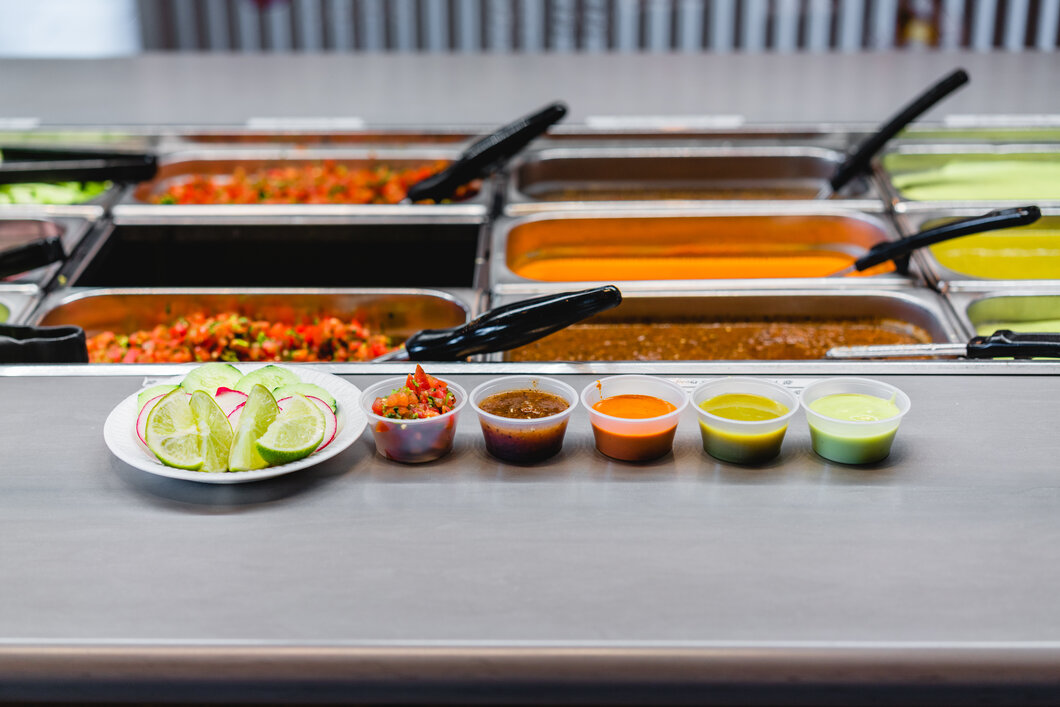
Salsa is Spanish for sauce, and any of these salsas can take your bean and cheese burrito up a notch.
- Pico de Gallo – Often used to add freshness and flavor, pico de gallo is made from a combination of tomatoes, onions, cilantro, lime juice, and salt. In some recipes, people add jalapeños, garlic, avocado, and bell peppers.
- Salsa Verde – A traditional green salsa, salsa verde is tangy and slightly spicy. It is made with tomatillos, green chilies, onions, garlic, cilantro, lime juice, and salt.
- Roja Salsa – Roja salsa means “red salsa” and has a rich, slightly spicy flavor. It’s made with red tomatoes, chilies, onions, garlic, cilantro, lime juice, salt, cumin, oregano, and black pepper.
- Mango Salsa – Mango salsa is fresh, sweet, and tangy, made from a perfect combination of mango, red onion, red bell pepper, cilantro, jalapeño, lime juice, and salt. Other ingredients that may be added are avocado, tomatoes, cucumber, and pineapple.
- Corn Salsa – Delightful and colorful, corn salsa is full of flavor with the sweetness of the corn and the tanginess of lime, plus red onion, bell pepper, jalapeño, cilantro, and salt. Some people choose to add black beans, tomatoes, avocado, garlic, and cumin.
Other Condiments
While our fresh salsa bar is enough for most bean and cheese lovers, others prefer to add even more Mexcellence to this classic. In particular, a squeeze of fresh lime juice is a welcome addition to the creamy and salty nature of the bean and cheese burrito. Or, consider a dollop of crema or a helping of guacamole.
Vegetables and Herbs
We love adding fresh veggies and herbs to our bean and cheese burritos. Traditional toppings include fresh-chopped cabbage, diced onion, and cilantro. At home, many bean and cheese burrito enthusiasts add diced tomatoes or avocado.
Burritos at Backyard Taco
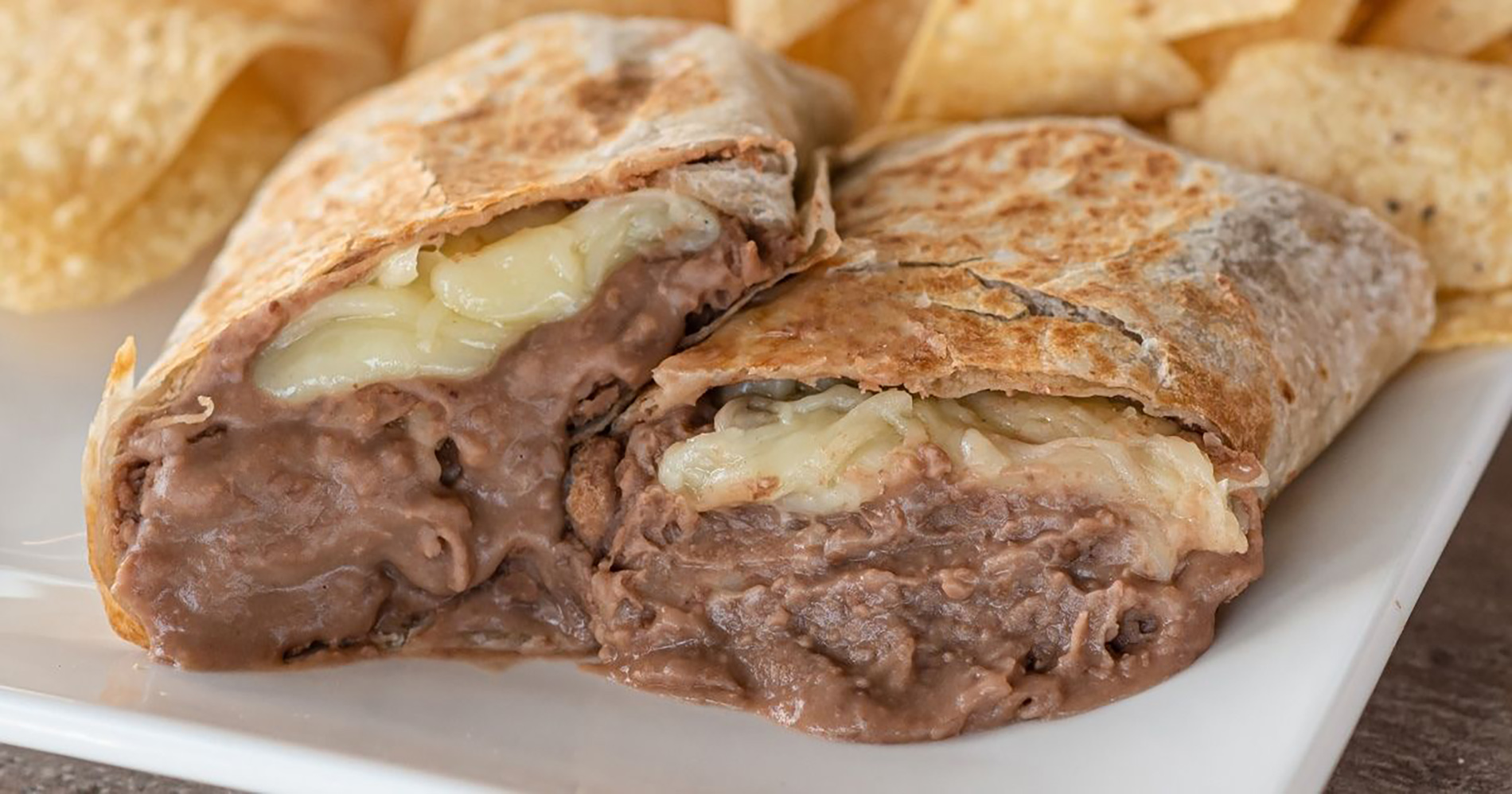
If you’re looking for the best burritos in Arizona, you can find them here at Backyard Taco. We’ll start with the star of the day – the bean and cheese burrito – but stick around to learn more about our other fabulous burrito options.
Bean and Cheese Burrito
The classic bean and cheese burrito, wrapped in a fresh flour tortilla, is available with your choice of beans and cheeses. Then, add your favorite toppings to complete this renowned burrito experience.
Meat Burritos
Even though the bean and cheese burrito is a classic, we understand that sometimes you may want to add a meat option to your burrito.
At Backyard Taco, we have options to satisfy everyone’s cravings. The best part? Beans are included!
- Steak/Carne Asada – A hearty option is the steak/carne asada burrito. You’ll get mesquite-grilled steak, refried beans, diced cabbage, red onion, pico de gallo, guacamole, and our signature red tomato sauce.
- Shredded Beef/Birria – Our shredded beef shanks are marinated in our secret birria seasoning blend and stuffed with refried beans, diced red onion, and cilantro.
- Chicken/Pollo – Our chicken/pollo burrito comes packed with refried beans, diced cabbage, red onion, pico de gallo, guacamole, and red tomato sauce.
- Pork/Al Pastor – Our al pastor burrito is created with our spit-grilled pork and adobada marinade while also packed with refried beans, diced red onion, and cilantro.
Burrito Mondito
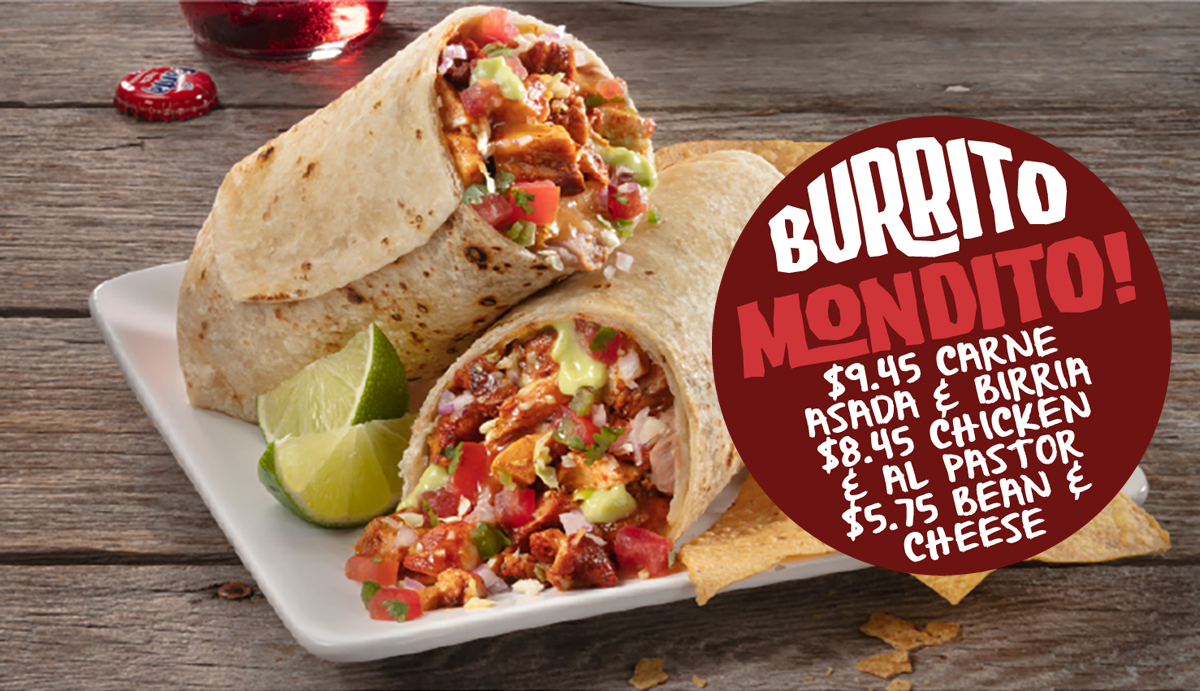
You’ve heard of Taco Tuesday, but have you heard of its close cousin, Burrito Mondito? Backyard Taco is proud to introduce Burrito Mondito, home of the most delicious discount this side of the Rio Grande. (After all, who doesn’t love a burrito discount?) On Mondays only, carne asada and birria burritos will cost $9.45, chicken and al pastor tacos will cost $8.45, and the bean and cheese will cost just $5.75!
What better time to try all your favorite burrito options?
Come Try a Classic Backyard Bean and Cheese Burrito for Yourself
At Backyard Taco, we love burritos just as much as we love tacos, which is why we’re so excited to share all of our burrito options with our familia. Celebrate our (and your) love for the classic bean and cheese burrito at any of our six locations. Our authentic recipes and traditional cooking techniques guarantee the bean and cheese burrito you know and love every single time.
Or, branch out and take home a meat-based option the next time you stop in. Either way, we can’t wait to introduce you to the truly Mexcellent burritos at your local Backyard Taco.
Sources:
- Mullins, A. P., & Arjmandi, B. H. (2021). Health Benefits of Plant-Based Nutrition: Focus on Beans in Cardiometabolic Diseases. Nutrients, 13(2), 519. https://www.ncbi.nlm.nih.gov/pmc/articles/PMC7915747/
- Harvard T.H. Chan School of Public Health. (n.d.). Cheese. The Nutrition Source. Retrieved August 12, 2024, from https://nutritionsource.hsph.harvard.edu/cheese/
- National Historic Cheesemaking Center. (n.d.). History of Cheese. Retrieved August 12, 2024, from https://nationalhistoriccheesemakingcenter.org/history-of-cheese/
- The Street Food Chef. (2023, June 6). The Burrito’s History & Culture. The Street Food Chef. Retrieved August 12, 2024, from https://www.streetfoodchef.co.uk/blog/the-burritos-history-and-culture
- The Food We Know. (n.d.). The History of the Burrito. Retrieved August 12, 2024, from https://thefoodweknow.com/the-history-of-the-burrito/

Dr. Tyler loves tacos! He is one of the owners of Backyard Taco, and can sometimes be found moonlighting there at night or on the weekends.
Dr. Tyler Robison is an alum of Mesa’s Mountain View High School. He graduted from Brigham Young University before being accepted to the “Top Ten-nationally ranked” University of Louisville in Kentucky, where he earned his Doctorate in Dental Medicine and a Master’s Degree in Oral Biology. He graduated with honors in the top ten percent of his class. Dr. Robison continued at the University of the Pacific in San Francisco, where he received a second master’s degree in dental science and his orthodontic certification.
Dr. Tyler enjoys serving in his community. He is a provider for the Smile Back Foundation, which offers scholarships for free dental treatment to underprivileged East Valley students. He is also a Major in the U.S. Army Reserve and served during Operation Enduring Freedom in 2008.
Dr. Tyler Robison’s favorite pastimes include spending time with his family on the lake, at the beach, or on the slopes. He is an avid and crazy snowboarder! He has three incredible sons and one sweet daughter: Caden, Jace, Crew, and Bliss.
